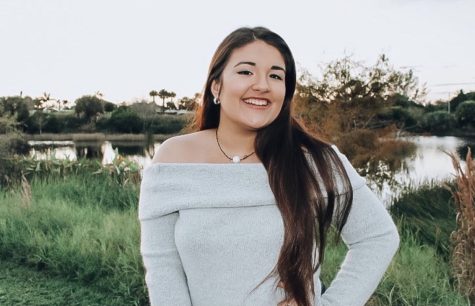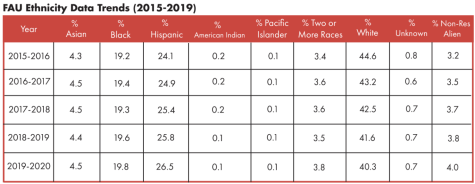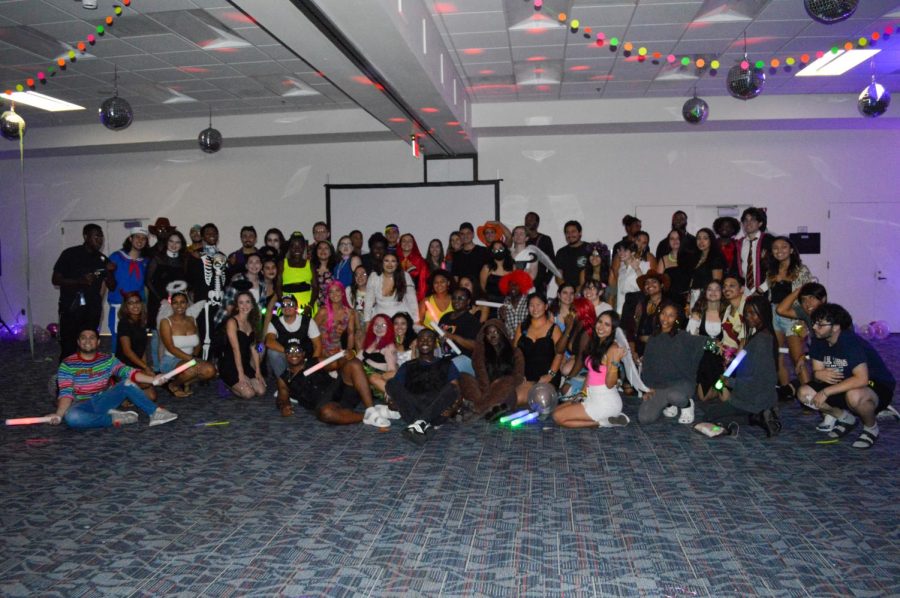Students speak on FAU’s diversity and inclusion
The university has the most diverse student population in Florida, here is how students feel on campus.
Multicultural Programming hosts a variety of events catered to people of all ethnicities.
October 26, 2021
For FAU President John Kelly, a diverse student body is an integral part of the university.
“I’m proud that FAU is known as an institution where students from all backgrounds have the opportunity to succeed,” he stated last September.
This year, FAU again ranked first among public universities in Florida and 41st in the nation for diversity in U.S. News & World Report’s annual Campus Ethnic Diversity rankings, which ranks universities based on the total proportion of minority students.
The University Press looked at how FAU’s student diversity compares to other public universities within Florida and spoke to various organizations to hear their views about diversity on campus and some of the challenges they face.
Athletics

While the overall student population at FAU is extremely diverse, athletics at the university can be viewed as one of the pillars of diversity at the university. Of the 18 National Collegiate Athletic Association (NCAA) teams at FAU, 16 of those teams have international players, with football and cheer as the only exceptions.
Even including the teams without an international player, each team features a roster filled with diversity in terms of ethnic makeup and birthplace. Much of the success of FAU Athletics gets come from their diverse student-athletes.
Diego Orduña Sousa, a junior business management major who came to the university directly from Puebla, Mexico, serves as a goalkeeper for the men’s soccer team.
“In the locker room, you can listen to Spanish, French, Swedish, a lot of languages,” stated Sousa, referring to the 19 of 30 players on the team who are international student-athletes. “It’s fun to listen to multiple languages at the same time.”
Sousa noted that the large community of international student-athletes helped him learn English and adjust to life within both FAU and the U.S. However, he explained that he still faced major challenges stemming from his international background.
“There is a lot of diversity here at FAU,” said Sousa, “but it can be uncomfortable sometimes.” When stating that he does not have a European background, he said, “Some people look at you differently.”
Sousa also deals with an obstacle that many international students must adjust to: gaining confidence in his English.
“My freshman year, I couldn’t literally say hello. I was shy to speak,” noted Sousa. “As an international student, it’s sometimes a struggle.”
While Sousa added that his confidence in speaking English has increased significantly, it still can be an issue within certain areas, including the classroom. He once ran into this problem when he was not allowed to bring in a translator for an exam in the event that he did not understand certain words.
“I was told ‘you gotta focus’ and I do focus but obviously English isn’t my first language so it’s going to be harder.” Sousa later added that most professors are “understanding.”
Despite the challenges that Sousa faces, he noted that the diversity at FAU is mostly good and that the international community on campus has helped him feel more comfortable.
Multicultural Programming (MP)

For Mariana Vallejo, the director of Multicultural Programming, the goal of the organization is to “open it from all different perspectives so we can see all different angles.”
Like Sousa, Vallejo is an ethnic minority student. She is a first-generation American, comes from a Colombian family, and is a junior majoring in political science. She has also faced certain challenges tied to her international background. “My whole life, I have been stereotyped.”
To combat these issues, specifically the stereotypes that she and other ethnic-minority students often face, Vallejo is planning a Multicultural Programming event in November called “Confronting Stereotypes” to bring in all people to talk about stereotypes.
“How I envision it is I want it to be hands-on. My goal is really that I want to confront it,” Vallejo said.
Beyond hosting events centered around Latinx and Hispanic communities, Vallejo and Multicultural Programming hopes to see people of all backgrounds at their events, stating that “anyone should be able to go enjoy and learn something.”

Vallejo also mentioned how much she and the organization value the importance of diversity on campus, specifically getting people to come to events and learn what diversity is.
When asked what diversity means to her, Vallejo responded, “Diversity for me is me and it’s you, it’s everyone. I think that diversity has everything to do with who you are as a person and how you were raised. My goal is still to educate, not only within Latinos and Latinx but also every other culture.”
FAU’s Diverse Student Population
When President Kelly and the administration promote FAU as one of the most diverse universities in the country, they are correct.
According to the aforementioned U.S. News, FAU ranked second in Florida and first in the state among public universities. When looking over the list, Nova Southeastern University placed 24th nationally, placing them first in the state. Following FAU at 41st, UCF comes next at 79th.
FAU has seen an increase in diversity within its student population for the last five years, as noted within the 2019-2020 Diversity Data Report.
Since 2015, Hispanic students represent the largest ethnic group which has increased at FAU. As of the 2019-2020 academic year, the Hispanic population has increased by 2.4%, representing 25.8% of the student population.
International students also saw an increase within the FAU student population, rising from 1.2% to 3.8% of the population. The biggest shift within the student population since 2015, however, was the decreasing amount of white students, dropping 4.3% and making up 41.6% of the population.
Editor’s Note: This story is a part of our October/November issue titled “On Campus and Awaiting Trial,” which you can pick up on campus or read online here.
Eston Parker III is the photo editor for the University Press. For more information regarding this or other stories, email eparker2018@fau.edu or tweet him @estonparker.







Darrell Nelson • Mar 25, 2023 at 7:26 pm
He will show up with that tramp wife if there’s a championship win.